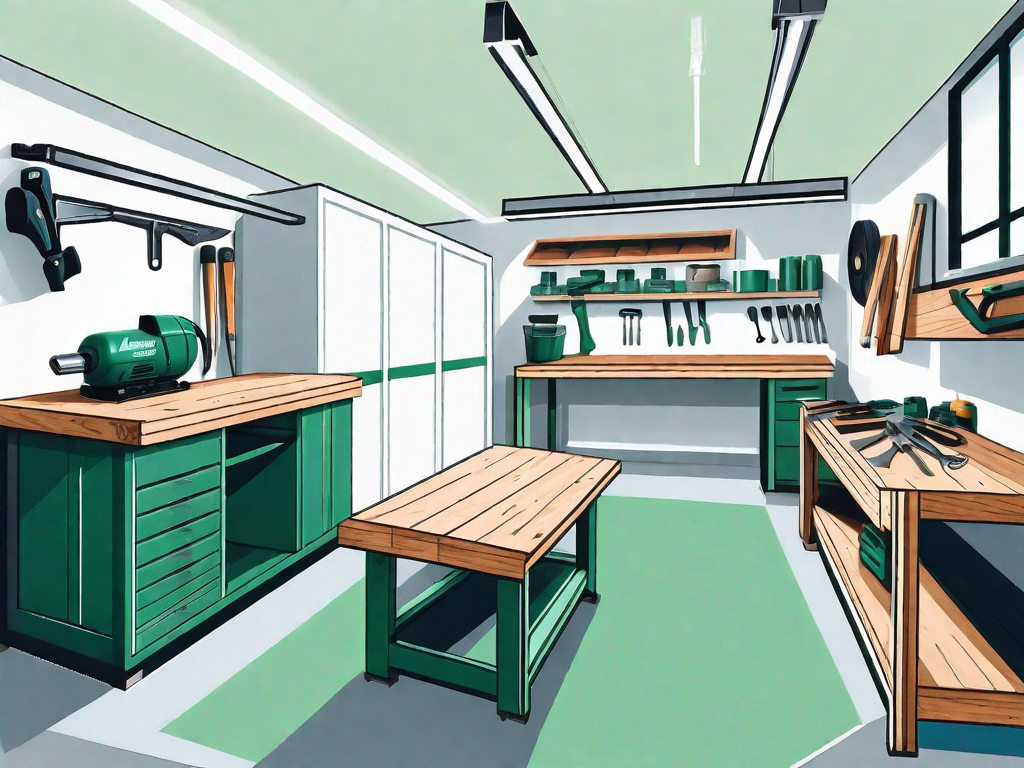Water rings can be a pesky problem on wooden surfaces, but fear not! With the right know-how and a few essential tools, you can easily banish those unsightly marks. In this article, we will take a closer look at the causes of water rings, the impact they have on different types of wood, the tools required for removal, and preventive measures to keep your wooden surfaces looking their best.
Understanding the Causes of Water Rings
The Science Behind Water Damage on Wood
Before we jump into the solutions, it’s important to understand why water rings form on wooden surfaces. Wood is a porous material, meaning it can absorb and retain moisture. When a wet object comes into contact with wood, it creates a barrier that traps the moisture beneath the surface. This results in the telltale ring-shaped stains we all dread.
Let’s delve deeper into the science behind this phenomenon. When water comes into contact with wood, it undergoes a process called capillary action. Capillary action is the ability of a liquid to flow in narrow spaces, against the force of gravity. The tiny spaces within the wood act as capillaries, drawing the water deeper into the material. As the water penetrates the wood, it carries along with it any dissolved substances, such as pigments or tannins, which contribute to the formation of water rings.
Furthermore, the temperature of the liquid or object that comes into contact with the wood can also affect the formation of water rings. Cold drinks, for example, can cause condensation to form on the surface of the wood. This condensation, combined with any dissolved substances, can seep into the wood and leave behind a visible ring-shaped stain.
Common Sources of Water Rings
Water rings can occur from a variety of sources. Accidental spills, condensation from cold drinks, and even hot mugs can leave behind unsightly marks. It’s essential to understand these common culprits to prevent water rings from forming in the first place.
Accidental spills are perhaps the most common cause of water rings on wooden surfaces. Whether it’s a glass of water, a cup of coffee, or a bottle of juice, any liquid that is accidentally spilled onto a wooden surface can quickly seep into the wood and create a water ring. The longer the liquid remains in contact with the wood, the deeper it can penetrate, making the stain more difficult to remove.
Condensation from cold drinks is another frequent cause of water rings. When you place a cold glass or a can of soda on a wooden tabletop, the difference in temperature between the cold object and the room can cause moisture to form on the surface of the wood. This moisture can then seep into the wood, leaving behind a water ring.
Surprisingly, even hot mugs can contribute to the formation of water rings. When you place a hot mug on a wooden surface, the heat can cause the moisture within the wood to evaporate. As the moisture evaporates, it can leave behind dissolved substances, such as coffee or tea stains, which can result in water rings.
By understanding the common sources of water rings, you can take proactive measures to prevent them. Whether it’s using coasters, wiping up spills immediately, or using protective mats, there are various steps you can take to safeguard your wooden surfaces from these unsightly stains.
The Impact of Water Rings on Different Types of Wood
Hardwood vs Softwood: A Comparative Analysis
The impact of water rings can vary depending on the type of wood. Hardwood, such as oak or mahogany, tends to be more resistant to water damage due to its density. Softwood, on the other hand, like pine or cedar, is more susceptible to water rings because it has larger pores. Understanding the characteristics of the wood you are dealing with will help you choose the right approach for removal.
The Effect of Water Rings on Finished and Unfinished Wood
The presence of a protective finish, such as varnish or lacquer, can also affect the severity of water rings. Finished wood usually has a more robust barrier against moisture, making it easier to remove the stains. Unfinished wood, on the other hand, lacks this protective layer, making water rings more likely to penetrate the surface. It’s important to keep this in mind when tackling the removal process.
Essential Tools for Removing Water Rings
Household Items That Can Help
Believe it or not, you may already have some handy tools for water ring removal right in your home! Common household items like mayonnaise, toothpaste, or baking soda can work wonders in lifting those stubborn stains. These items often contain mild abrasive properties that gently buff out the water rings without causing further damage to the wood.
Professional Products for Stubborn Stains
If the household remedies don’t provide the desired results, don’t worry. There are specialized products available that are specifically designed to tackle tough water rings. Look for wood cleaners or furniture polishes formulated to remove water stains. These products often contain solvents that help break down and remove the trapped moisture.
Step-by-Step Guide to Removing Water Rings
Preparing the Surface
Before diving into the removal process, it’s important to prepare the wooden surface properly. Start by wiping away any dust or debris with a soft cloth. This ensures a clean and smooth starting point for the treatment. Additionally, make sure the surface is completely dry to prevent further water penetration during the removal process.
Applying the Cleaning Solution
Next, it’s time to apply the chosen cleaning solution. Whether you opt for a household remedy or a specialized product, follow the instructions carefully. Apply the solution to a clean cloth and gently rub it onto the water rings in a circular motion. Take care not to scrub too vigorously, as this can damage the wood. Repeat the process until the stains start to fade.
Polishing and Finishing Touches
Once the water rings have diminished, it’s time to give your wooden surface some extra TLC. Use a separate clean cloth to gently polish the area, working in the direction of the wood grain. This will help restore the shine and remove any residue left by the cleaning solution. For an added layer of protection, apply a wood sealant or furniture wax to keep your surface looking flawless.
Preventive Measures Against Water Rings
Best Practices for Protecting Wooden Surfaces
Prevention is always better than treatment when it comes to water rings. To safeguard your wooden surfaces from future damage, consider using coasters, placemats, or tablecloths to create a barrier between your beverages and the wood. Promptly wipe up any spills or condensation to prevent them from seeping into the surface. These simple practices can go a long way in maintaining the beauty of your wooden furniture.
The Role of Wood Sealants in Prevention
Applying a protective sealant, such as varnish or polyurethane, can significantly minimize the risk of water rings. These sealants create a barrier on the surface of the wood, preventing moisture from seeping in and causing damage. Regularly inspect the sealant layer and reapply it as needed to ensure optimal protection.
With these tips and tricks in your arsenal, you’ll be well-equipped to tackle water rings on your wooden surfaces. Remember to approach the removal process with patience and care, as hasty actions may lead to unintended damage. By taking preventive measures and maintaining a vigilant eye, you can keep your wooden surfaces looking their best for years to come.



